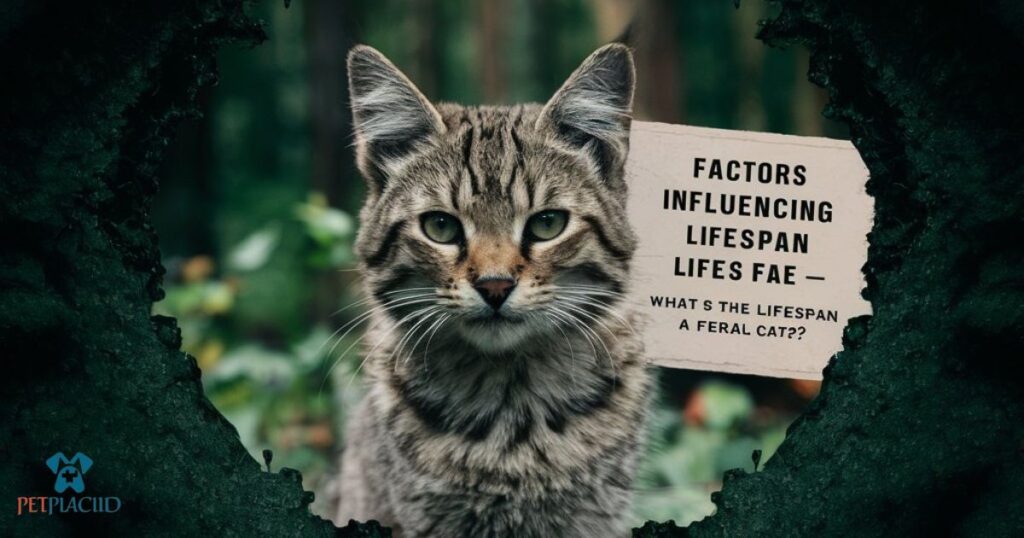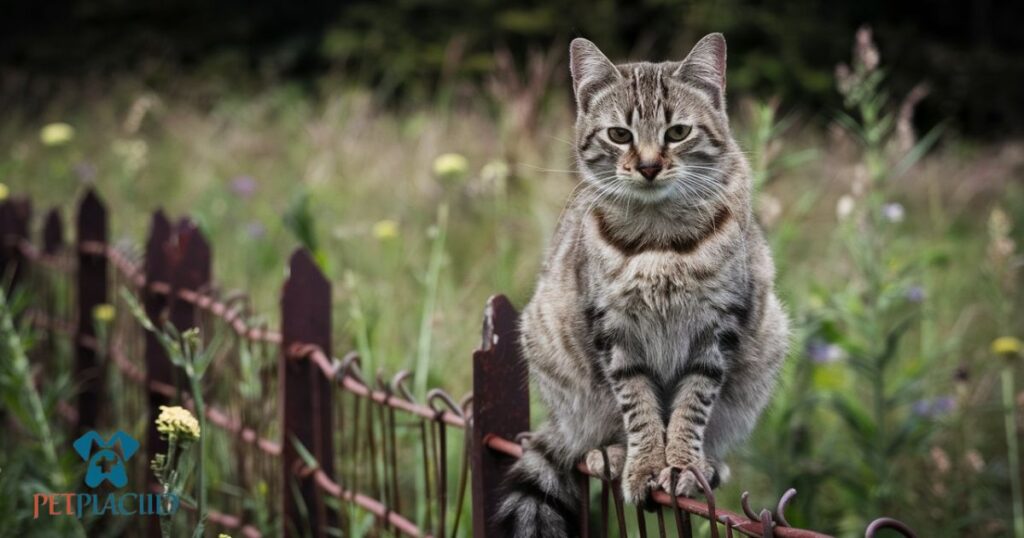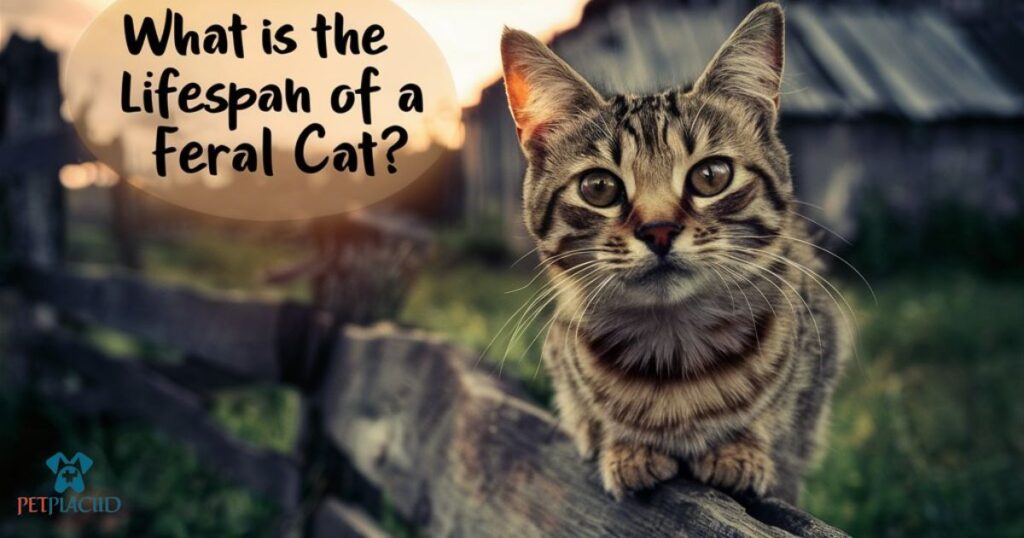Lifespan Of A Feral Cat, those living outdoors without human owners, have varied lifespans influenced by their environment and circumstances. Understanding how long feral cats live is important for managing their welfare and populations. Many factors, such as access to food, shelter, and healthcare, impact their lifespan. By exploring these elements, we can gain insights into improving the lives of feral cats and addressing challenges they face in the wild.
Curious about the lifespan of feral cats living in the wild, they face tough challenges, leading to shorter lifespans influenced by environmental conditions and health risks. Understanding their resilience highlights the importance of supporting their welfare.
Feral cats tend to have shorter lifespans, usually ranging from 2 to 5 years in the wild. Their survival depends on factors like access to food, shelter, and healthcare. However, they face greater risks from predators, diseases, and accidents compared to indoor cats. For more information read stay with us.
The Understanding Feral Cats
Feral cats are wild cats that live independently from humans. They roam freely in urban, suburban, and rural areas, often forming colonies for survival. Their lifespan is influenced by various factors, such as their ability to hunt, find shelter, and avoid dangers.
These cats are skilled hunters, relying on their instincts to catch prey for food. However, their lifespan can be shorter due to the challenges they face in the wild, including competition for resources and exposure to diseases. Despite their resilience, feral cats often lead tough lives, struggling to maintain their health and safety.
Human intervention plays a significant role in the lives of feral cats. Some communities implement trap-neuter-return programs to control their population and improve their welfare. However, the lifespan of feral cats remains uncertain, as their survival depends on a delicate balance between their instincts and the resources available in their environment.
Factors Influencing Lifespan
Factors influencing the lifespan of a feral cat vary widely. Habitat plays a crucial role in determining how long a feral cat might live. Access to shelter, food, and clean water directly impacts their longevity.

Social dynamics within feral cat colonies also affect their lifespan. Dominance hierarchies and territorial disputes can lead to stress and injuries, impacting their overall health and lifespan.
Furthermore, exposure to environmental hazards such as extreme weather, traffic, and predators significantly impacts the lifespan of feral cats. Their ability to adapt and survive in challenging conditions greatly influences how long they can live.
Natural Environment vs. Human Interaction
In the natural environment, feral cats live according to their instincts. They hunt for food and find shelter in secluded places. This lifestyle can sometimes lead to a shorter lifespan due to harsh weather conditions and competition for resources.
Human interaction can significantly impact the lifespan of feral cats. When humans provide food and shelter, it can increase their chances of survival. However, exposure to hazards like traffic and disease from other animals can also shorten their lives.
Finding a balance between natural instincts and human intervention is crucial for the lifespan of feral cats. Providing support while allowing them to maintain their independence can lead to a healthier and longer life for these resilient creatures.
Health Challenges and Risks
Health challenges and risks significantly affect the lifespan of feral cats. These cats often face diseases such as feline immunodeficiency virus (FIV) and feline leukemia virus (FeLV). These illnesses weaken their immune systems, making them more susceptible to infections.
Parasites like fleas, ticks, and intestinal worms also pose serious health risks to feral cats. Without proper veterinary care, these parasites can cause anemia, malnutrition, and other complications. Additionally, injuries from fights with other animals or accidents can lead to infections or even fatalities if left untreated.
Poor nutrition exacerbates health issues in feral cats. Limited access to quality food sources can result in malnutrition, affecting their overall health and reducing their lifespan. Furthermore, lack of clean water sources can lead to dehydration, further compromising their well-being.
Nutritional Needs and Access to Resources
Nutritional needs play a crucial role in determining the lifespan of feral cats. These cats require a consistent supply of nutrients to maintain their health and vitality. Without proper nutrition, their lifespan can be significantly shortened.
Access to resources such as food and clean water directly impacts the longevity of feral cats. Limited access to these essentials can lead to malnutrition and dehydration, which can shorten their lifespan. Ensuring regular access to food and water sources is essential for supporting the health and survival of feral cats.
Also, the quality of food available to feral cats can impact their lifespan. A diet lacking essential nutrients can weaken their immune system and make them more susceptible to diseases and other health issues. Providing high-quality, balanced nutrition can help extend the lifespan of feral cats and improve their overall well-being.
Reproductive Patterns and Their Impact
Reproductive patterns play a vital role in determining the lifespan of feral cats. Cats reproduce prolifically, leading to larger populations in the wild. This high rate of reproduction strains available resources and increases competition for food and shelter. As a result, feral cats may face malnutrition and higher risks of disease, affecting their longevity.

The mating behavior of feral cats contributes significantly to their lifespan. Female cats can become pregnant multiple times throughout the year. This frequent breeding cycle takes a toll on their health, leading to exhaustion and weakening of the immune system. Consequently, their ability to fight off illnesses diminishes, impacting their overall lifespan.
Also, uncontrolled breeding among feral cats leads to overpopulation issues in urban and rural areas. Without intervention, this population explosion exacerbates the struggle for survival. It increases the prevalence of diseases like feline immunodeficiency virus (FIV) and feline leukemia virus (FeLV), further reducing the average lifespan of feral cats in the wild.
Human Intervention and Its Effects
Human intervention greatly affects the lifespan of feral cats. Trap-neuter-return programs help control populations. Spaying and neutering prevent overbreeding and reduce the risk of disease transmission.
However, some human actions can harm feral cat populations. Poisoning and intentional harm decrease their lifespan. Educating communities about humane solutions is crucial.
Providing food, shelter, and medical care positively impacts feral cat longevity. Collaborative efforts ensure a healthier coexistence. By addressing their needs, we can enhance the lifespan of feral cats.
Case Studies and Observational Data
In examining case studies and observational data concerning the lifespan of feral cats, researchers delve into real-life scenarios. These studies offer valuable insights into the survival rates and longevity of feral cat populations. By analyzing diverse environments and conditions, researchers can uncover trends and patterns affecting feral cat lifespans.
For instance, studies in urban areas often reveal shorter lifespans due to various hazards such as traffic and disease. Conversely, feral cats in rural or protected environments may exhibit longer lifespans owing to reduced human interference and access to natural resources. Such observations emphasize the significant impact of habitat and human interaction on feral cat longevity.
Moreover, meticulous data collection allows researchers to identify specific factors influencing feral cat lifespans. By tracking health metrics, reproductive rates, and environmental variables, researchers can pinpoint critical determinants of survival. These insights inform strategies for managing feral cat populations and promoting their welfare in diverse habitats.
Recommended blog: 50 CUTE ANIMALS
Frequently Asked Questions
How long do feral cats normally live?
Feral cats typically have shorter lifespans compared to domestic cats, averaging around 2 to 5 years in the wild. Factors such as limited access to healthcare, exposure to harsh environments, and high risks of accidents and disease contribute to their shorter lifespan.
Why do feral cats only live 3 years?
The average lifespan of feral cats being around 2 to 5 years is attributed to various challenges they face in the wild. These include food scarcity, predation, disease, and lack of veterinary care. These factors significantly impact their survival rates, resulting in a shorter lifespan compared to domestic cats.
What is the average lifespan of an outdoor cat?
Outdoor cats, including feral and stray cats, generally have shorter lifespans compared to indoor cats. Their average lifespan ranges from 2 to 5 years due to exposure to various dangers such as traffic accidents, predators, harsh weather conditions, and limited access to medical care.
Do feral cats have good lives?
Feral cats often face numerous challenges in the wild, leading to difficult lives characterized by constant struggle for survival. While some may find enough resources to thrive temporarily, many face hunger, disease, and other dangers. Without proper intervention, their quality of life can be poor, emphasizing the importance of humane management strategies and efforts to improve their welfare.
Conclusion
Thoughtful the lifespan of feral cats is crucial for effective management strategies. Feral cats typically have shorter lifespans due to exposure to harsh environmental conditions and limited access to healthcare.
Factors such as food scarcity, predation, and disease significantly impact the lifespan of feral cats. Providing resources like food, shelter, and medical care can potentially extend their lifespan and improve their overall welfare.
Efforts to control feral cat populations should prioritize not only population management but also enhancing their quality of life. By addressing the challenges faced by feral cats, we can strive towards ensuring a healthier and longer lifespan for these resilient creatures.

Jackson is a seasoned professional in the field of pets, boasting four years of enriching experience. His expertise spans pet care, training, and health, ensuring insightful and reliable content for pet enthusiasts on our site.







